 Download this article in magazine layout
Download this article in magazine layout
- Share this article
- Subscribe to our newsletter
Transforming by-products into resources – circular economy approaches for agricultural products
The cradle-to-cradle (C2C) philosophy, introduced by the US American architect William McDonough and the German environmentalist Michael Braungart in the late 90s, challenges the traditional linear economy by advocating for two distinct types of materials: biological nutrients and technical nutrients. Biological nutrients are materials that can safely return to the environment, nourishing ecosystems, while technical nutrients are those that can be perpetually recycled without loss of quality. Applying these principles to agriculture means rethinking how we use and manage by-products to minimise waste and maximise value.
In former times and poorer societies, the full use and circularity of products were not merely a fancy sustainability idea but a practical response to economic scarcities. Every resource and material was regarded as valuable, and nothing was wasted. This historical perspective underscores the deep roots of circular economy thinking, highlighting that it is not just a contemporary concept but a reflection of age-old practices born out of necessity.
Furthermore, in a world of rising population and limited resources, access to these raw materials should be possible for everyone, including those living in poverty. Circular economy approaches aim to democratise resource access and ensure that even marginalised communities can benefit from the efficient use and repurposing of materials, contributing to greater equity and shared prosperity. By reducing waste and maximising resource efficiency, circularity can help address the challenges posed by resource scarcity and offer a more sustainable future for all.
Contributing to sustainable and resilient food systems
Before looking into the practical examples, it is essential to understand how circular economy approaches align with modern perspectives on food systems. In today’s world, where food waste is a global concern, it is crucial to minimise waste and ensure that all parts of agricultural products are used to their fullest potential. Circular economy principles optimise resource use, ensuring that every component of an agricultural product is put to good use. This is not only environmentally responsible but also contributes to more sustainable and resilient food systems. Some examples:
Banana stems – a fibre-rich opportunity for textiles and packaging
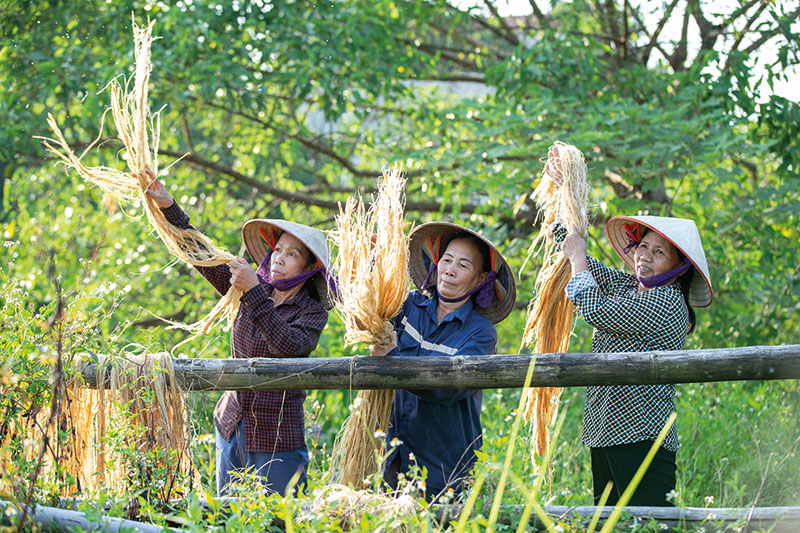
The fibres of the banana stems are a valuable raw product for home textiles and packaging. Photo: CRED/ Banana project
Banana cultivation is a significant agricultural activity in Vietnam. While the fruit is the primary focus, the banana stem, often considered a waste product, presents an untapped resource. Helvetas Germany and the Vietnamese civil society organisation CRED have taken an innovative approach to this by-product, applying circular economy principles to transform banana stems into valuable fibre raw material for home textiles and packaging. The process involves harvesting banana stems after the fruit has been harvested. These stems are then processed to extract fibres, which are subsequently woven into textiles or used as sustainable packaging material. Not only is value added to what was once considered waste but the need for more resource-intensive materials like cotton or synthetic fibres is also reduced.
This circular approach has several environmental and social benefits:
- By utilising banana stems, the demand for virgin materials is reduced, lessening the environmental impact of textile and packaging production.
- Banana stems that would have otherwise been discarded are transformed into useful products, reducing waste and its associated environmental problems.
- Local communities can benefit from this endeavour by participating in the processing and production, creating employment opportunities, and income generation.
- The use of local, renewable resources in the production of textiles and packaging materials can result in a reduced carbon footprint compared to traditional materials.
The outlook for employment benefits is impressive. For the stem material of 1,000 banana farmers, the by-product processing as described is underway to create 200 jobs for workers in cooperatively processing the stems to fibres and a further 250 jobs for handicraft women and men producing home textile products from these fibres (see photo).
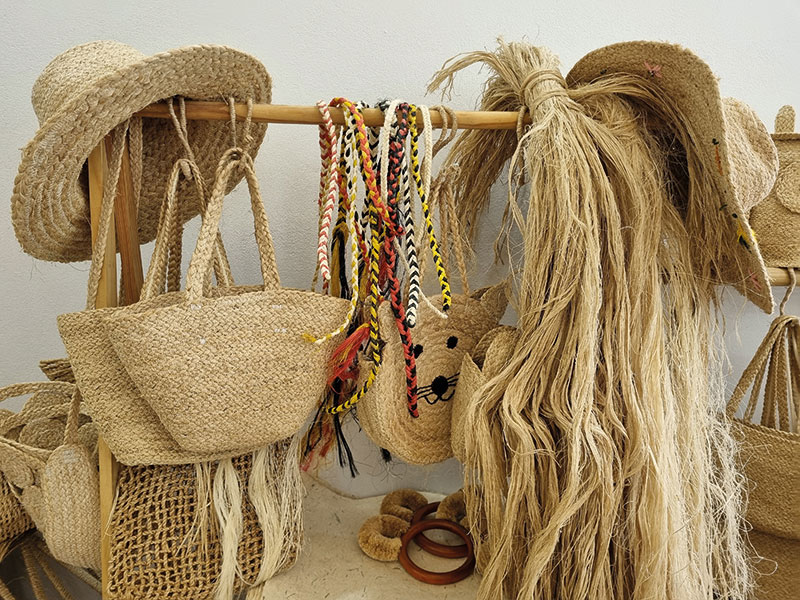
Handicraft made of banana stem fibre. The circular approach offers numerous employment opportunities for local communities. Photo: CRED/ Banana project
Rice rusks – from by-product to sustainable building material
Rice is a staple crop in many parts of the world and its production generates a significant amount of waste in the form of rice husks. However, with the right approach, these rice husks can be turned into a valuable resource. In a bid to expand the application of circular economy principles to different regions, Helvetas commissioned a study to identify the most reasonable uses for rice by-products in West Africa. The study evaluated potential uses for their employment effects, environmental performance, and the investment required to initiate production. Among the analysed options, particle boards from rice husks emerged as a suitable and easily transferable option.
The technology required to process rice husks into particle boards is relatively simple and can be implemented in both urban and rural settings. This presents an opportunity to not only reduce waste but also create local industries that produce affordable building materials. The resulting particle boards are lightweight, durable, and resistant to pests and moisture, making them an excellent choice for construction. A small-scale rice mill with a capacity of around five tonnes of paddy per day will have an average volume of one tonne of rice husks per day. This is sufficient raw material to add two more jobs to the milling operations just for valorising the husks in form of simple particle boards. With very basic board pressing machinery and some natural ingredients as binder (any starches from cereals mixed with caustic soda, with cassava starch being especially suitable), one can create particle boards with sufficient durability for small constructions like hen houses or stables for smaller livestock.
The benefits of this circular approach with rice husks are numerous:
- Rice husks, which would otherwise be discarded or burned, are transformed into a valuable construction material, reducing waste and air pollution.
- The use of locally sourced rice husk particle boards can lower construction costs, making housing more affordable in impoverished areas.
- Producing these boards can stimulate local economies by creating jobs and fostering entrepreneurship.
- The particle boards offer a sustainable alternative to traditional construction materials, contributing to more environmentally friendly building practices.
Cocoa pod husks – beyond soap and fertiliser
Shifting the perspective to view agricultural by-products as valuable raw materials rather than mere wastes transforms them into assets. The example of cocoa pod husks is particularly eye-opening: empty pods, which are left over after extracting the beans used in chocolate production. Surprisingly, the empty pods represent a much larger biomass by volume compared to the beans themselves. The ratio of bean weight to empty pod weight can range from 1:1 to 1:10.
Traditionally, in West Africa, there are established recipes for making various types of soap from cocoa pod husks, although this only utilises a small fraction of the total volume. An additional simple and noteworthy application emerges with the growing interest in biochar as a soil additive. This method becomes particularly relevant for replenishing soils that have lost their organic matter, offering a practical way to make the most of these abundant cocoa pod husks. This dual approach not only minimises waste but also contributes to the enhancement of soil quality, showcasing the untapped potential of these often overlooked agricultural by-products.
These two pathways of utilisation can be implemented very easily with lowest investments. But more sophisticated approaches with very high intended value added are also on the drawing board. Helvetas Germany and Helvetas Vietnam are collaborating on a project with key players in the Vietnamese cocoa value chain to develop environmentally friendly chocolate packaging made from cocoa pod husks. By combining these husks with poly-lactic acid (PLA – a widely recognised biodegradable polymer derived from various sugars), the resulting packaging becomes both more affordable and quicker to degrade compared to pure PLA foils. However, this type of packaging is currently more expensive than conventional plastic-based materials. Nevertheless, the potential for change is on the horizon, driven either by regulatory measures banning plastics (as already initiated by some sub-Saharan countries) or by increased consumer demand. These factors present a significant opportunity for broader implementation in the near future.
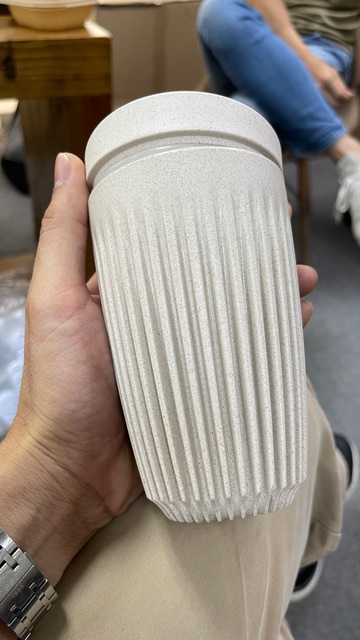
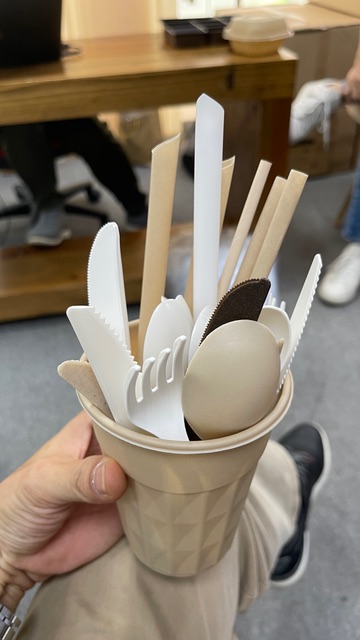
Degradable plastics based on rice husks and by-products from coffee and sugar processing. These are references for the intended products from cocoa pod husks. Since these would bring fibres as well as starch components, the team works on similar products just from the cocoa pods without need for further additives. Also softer foils from the cocoa pod husks are on the development board aimed to wrap the chocolate itself. Photos: Courtesy of AirX
Circular economy approaches for agricultural products hold immense promise, particularly from a development perspective. They offer a pathway to enhance social and environmental sustainability while generating numerous opportunities for employment, attractive jobs for younger people and new businesses in the Global South. By embracing these innovative strategies, we can not only reduce waste but also contribute to more sustainable and resilient agricultural systems.
David Bexte is Food Systems Advisor with HELVETAS Intercooperation gGmbH in Bonn, Germany.
Jens Soth is Senior Advisor, commodity projects with HELVETAS Swiss Intercooperaton in Zurich, Switzerland
Contact: jens.soth@helvetas.org


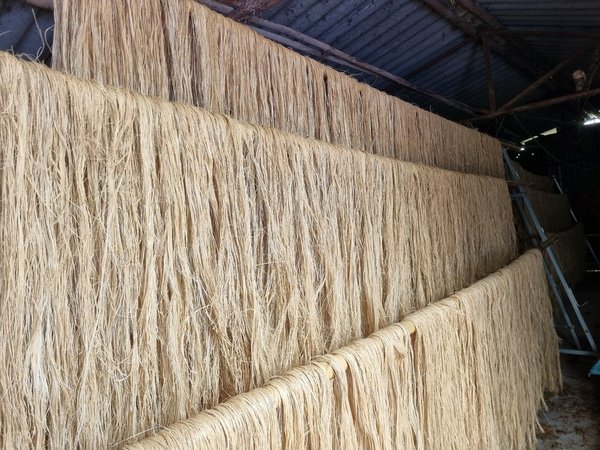


Add a comment
Be the First to Comment